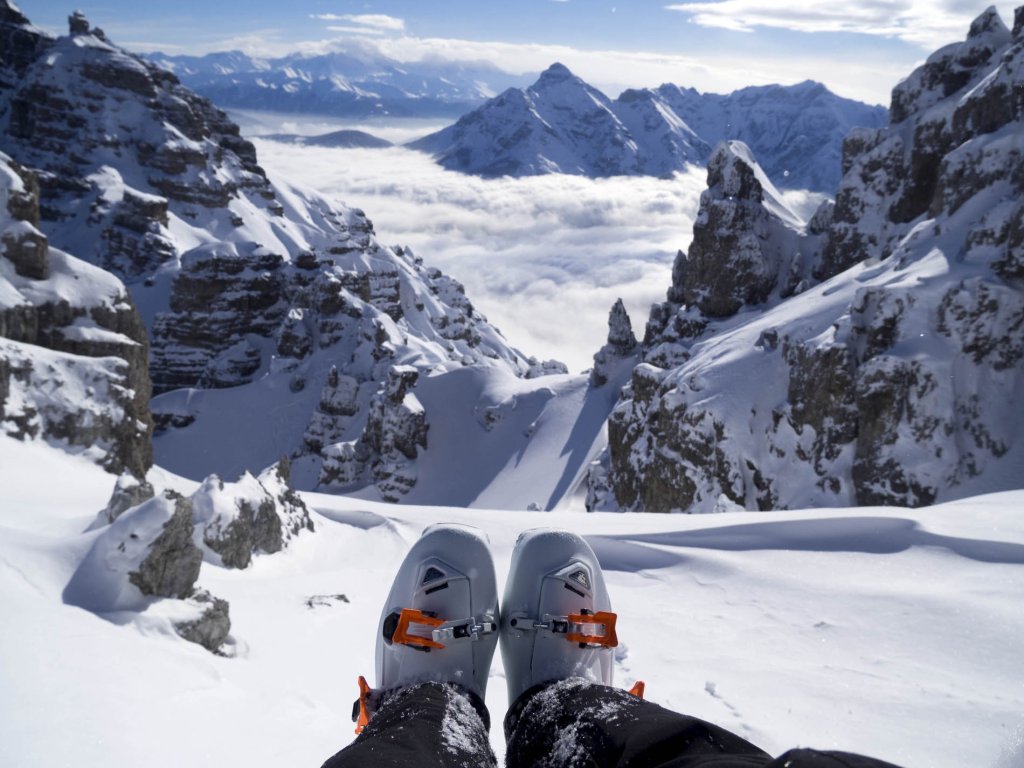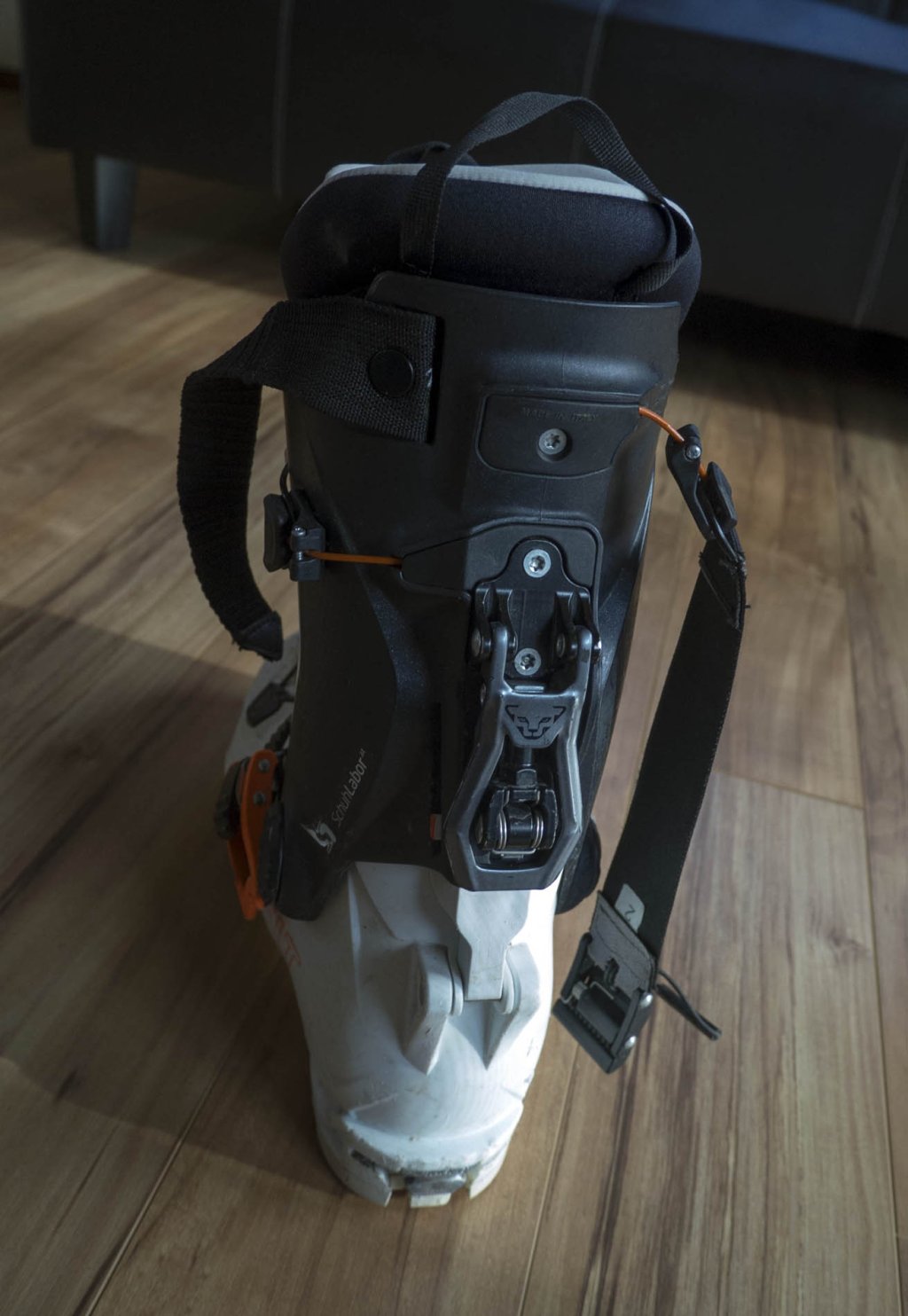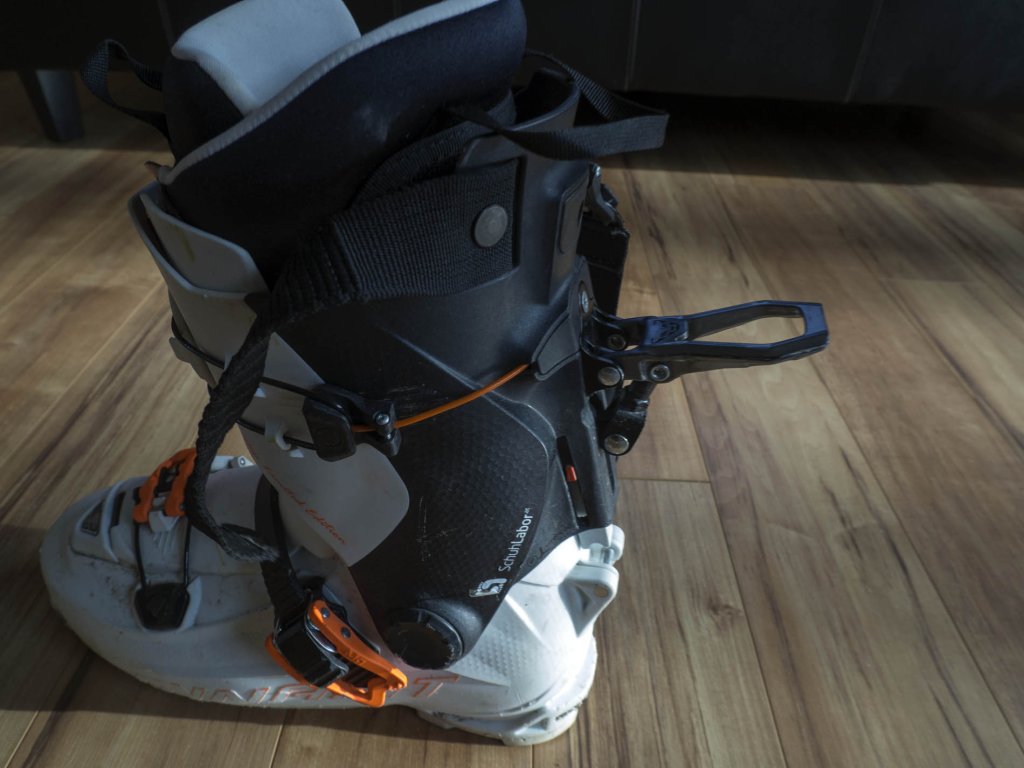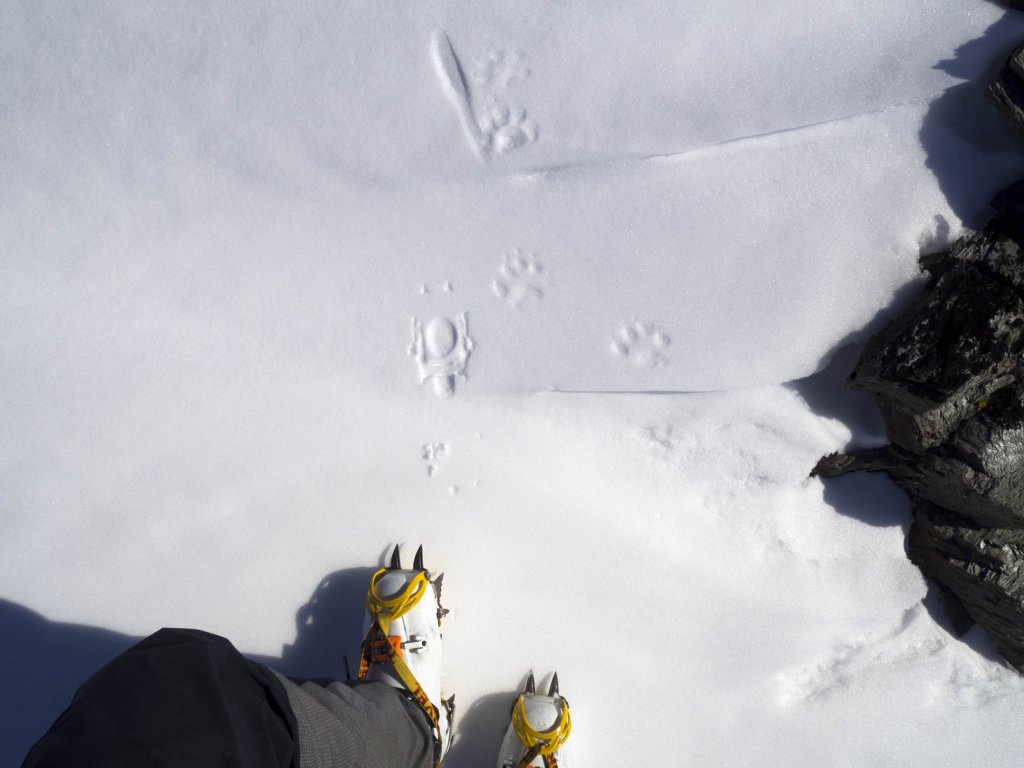We have been using the shoe since last spring. How has it performed so far?
The shoe
Buckles
From top to bottom, the shoe has a "powerstrap" with a kind of clamp fastener instead of Velcro, followed by a buckle with a cable pull, which is also connected to the strap and the walking mechanism and "binds" the upper parts together. There is a ratchet buckle in the instep area slightly below the ankle and finally another "normal" buckle on the forefoot.
The shell
The shell is made of Grilamid on the Pro model (the carbon look shaft material is made of Grilamid with fiberglass, according to the manufacturer) and Pebax on the PX model. The PX model is slightly softer and slightly heavier than the Pro model. The Pro model was tested here in the Limited Edition (= pre-release model in a different color). The boot has a 55° shaft rotation. The camber angle is 11° in downhill mode and cannot be adjusted.
Speed Nose
Like other current Dynafit boots, the boot has a so-called "Speed Nose". This means that the usual bridge at the tip of the shoe is missing. The pivot point in walking mode is slightly further back with the Speed Nose than in shoes with a bar, which according to Dynafit ensures a more natural walking feel (the natural pivot point for human feet is on the ball of the foot, not the tip of the toes). Thanks to the Speed Nose, the shoe is significantly shorter than shoes of the same size with a normal nose. The test model in size 27.5 has a sole length of 301mm. If you switch to Speed Nose boots with an otherwise identical setup, you should check whether the binding can be adjusted accordingly.
The boot can clearly only be used with pin bindings and the Speed Nose is not compatible with normal stirrup crampons thanks to the missing bar. To get around this problem, you can
a) purchase a special adapter from Dynafit
b) buy Dynafit/Salewa's own ultralight crampons, which are attached to the sole of the boot with a metal clip
c) use basket crampons.
If you want to speculate, you can try this Instagram post regarding future nose shape - perhaps there is hope for a future return of the bar.
The walking mechanism
The so-called 'Hoji-Lock' is the heart of the boot: When the lever at the back of the boot is flipped from ascent to descent, the cable tightens and the powerstrap and upper buckle are tightened. The plastic parts of the shaft are pulled onto the lower shell and snap into place. In the heel area, a solid plastic latch moves downwards and engages in a metal part, preventing play to the rear. If you open the lever for the ascent, the process runs in the other direction accordingly.















